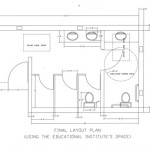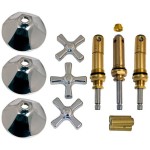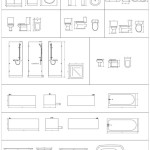How to Change a Bathroom Vent: Essential Aspects
Maintaining a well-ventilated bathroom is crucial for minimizing moisture, odors, and mold growth. A properly functioning bathroom vent plays a vital role in extracting stale air, ensuring a comfortable and healthy indoor environment. Changing a bathroom vent might seem like a daunting task, but with the right tools and a step-by-step guide, it can be a manageable project.
This article will delve into the essential aspects of changing a bathroom vent, providing a comprehensive overview of the steps involved, necessary materials, and common challenges. Whether you're a seasoned DIY enthusiast or a novice tackling home repairs, this guide will empower you with the knowledge and confidence to complete the task effectively.
Selecting the Right Vent
Choosing the appropriate bathroom vent is paramount to ensure efficient air extraction. Consider the size of your bathroom and the desired airflow rate. Look for vents that are rated for bathroom use, as they are designed to withstand moisture and humidity.
Types of bathroom vents include:
- Exhaust fans
- Ceiling vents
- Wall vents
Once you've selected the vent, gather the necessary tools, including a screwdriver, putty knife, and electrical tape.
Removing the Old Vent
Before installing the new vent, it's essential to remove the old one. Disconnect the electrical power supply to the vent and unscrew the mounting screws. Carefully detach the vent from the wall or ceiling, taking care not to damage the surrounding surface.
Use a putty knife to gently scrape off any old sealant or adhesive residue around the vent opening.
Installing the New Vent
Position the new vent over the opening and secure it with the mounting screws. Reconnect the electrical wires, ensuring a tight connection to prevent sparking. Seal the edges of the vent with a silicone or latex sealant to prevent air leaks.
Turn on the power and test the vent to ensure it's functioning correctly. Adjust the airflow rate, if necessary, to optimize ventilation.
Troubleshooting Common Challenges
During the vent replacement process, you may encounter some common challenges:
- Difficulty removing old sealant: Use a heat gun or hair dryer to soften the sealant, making it easier to remove.
- Uneven mounting surface: Use shims or spacers to level the vent before securing it.
- Loud noise: Check for loose components or damaged blades in the vent fan.

Blog

Installing A Bathroom Fan Fine Homebuilding

How To Replace And Install A Bathroom Exhaust Fan From Start Finish For Beginners Easy Diy

Venting A Bath Fan In Cold Climate Fine Homebuilding

Install A New Bathroom Vent Fan Light The San Fernando Valley Sun

How To Replace A Bathroom Exhaust Fan Without Attic Access 12 Step Guide Home Inspector Secrets

Filth How To Take Apart And Clean A Bathroom Exhaust Fan With Heater

How To Replace And Install A Bathroom Exhaust Fan Quiet Motion Sensor Diy Tutorial

Air Sealing Bathroom And Kitchen Exhaust Fans Building America Solution Center

How To Replace A Bathroom Exhaust Fan Without Attic Access 12 Step Guide Home Inspector Secrets
Related Posts







